If you have a hot water supply in your kitchen or elsewhere, you might have noticed that you do not get hot water precisely at the instant you turn of the tap. You need to wait a couple of minutes before you can get access to hot water. This can be quite an annoyance in many cases. While it may not appear to be a lot per instance basis, it can indeed be wastage of thousands of litres of water when you look at it from an annual point of view.
A Hot Water recirculating pump is what would help you solve this issue. Let us check out what is a hot water recirculating pump and how it can solve the issue for you.
What Purpose Does a Recirculation Pump Serve?
A hot water recirculating pump lets you get the hot water supply at the instant you turn on the tap. By definition, a hot water recirculating pump is a special type of water pump installed at your home that provides you an instant or an almost instant availability of hot water to your tap or other fixtures.
A hot water recirculating pump simply reduces the time taken for the hot water to reach your faucet or tap. This essentially improves the convenience levels in addition to saving millions of liters of water wasted annually.
What is the Main Cause of Slow Hot Water?
One of the prime reasons for the slow hot water is the distance between the source of hot water and each of the fixtures where the hot water is required. Most of the homes today have larger diameter water piping, which will take a huge time for the hot water to reach the destination fixtures.
A few common and main causes of slow hot water can include a few of the following:
- Corroded Pipes – If your fixtures are older enough, the prime reason for the slow hot water can be the corroded pipes. It can be one of the most expensive issues in most cases. It would be a good idea to replace your plumbing system with copper or PVC piping.
- Surrounding Temperature – The temperature can also be a deciding factor that would decide the hot water supply rate. You will ideally experience faster hot water in summer than in winters.
- Hard water scale – The hard water scale can be one of the deciding factors and can determine the rate at which hot water flows in your system. The hard water can scale up the piping and can cause severe issues. This can eventually drop the flow of hard water.
How Does a Hot Water Recirculating Pump Work?
The hot water recirculating pump, as the name indicates, creates a loop for the hot water to move across all the fixtures, taps, and faucets in your water circulation system. The hot water is continuously recirculated through the entire plumbing including even the farthest of the fixtures. The sensor valve on the farthest fixture shuts off the pump when hot water reaches it, and turns it on when the hot water temperature goes below the threshold set. The hot water loop is continuously maintained at all times to avoid waiting for the hot water at any of the fixtures.
The water pump used in the hot water recirculating pump is ideally of a softball size. It is generally installed above the water heater or just below the sink. In most of the cases, installation above the heater has been rated to be one of the excellent options. However, even under the sink installation has been known to have its own advantages.
The Hot water recirculating pump can be primarily of two types:
- Demand based
- Gravity based
The Demand controlled system has a switch or motion sensor located near each of the fixtures. This is used to activate the energy-efficient circulation system. The pump also comes with a temperature sensor and a check valve to prevent cold water from entering the return line. The sensor is used for sensing if the hot water has reached the farthest of the fixtures, and if it does, the pump is shut off.
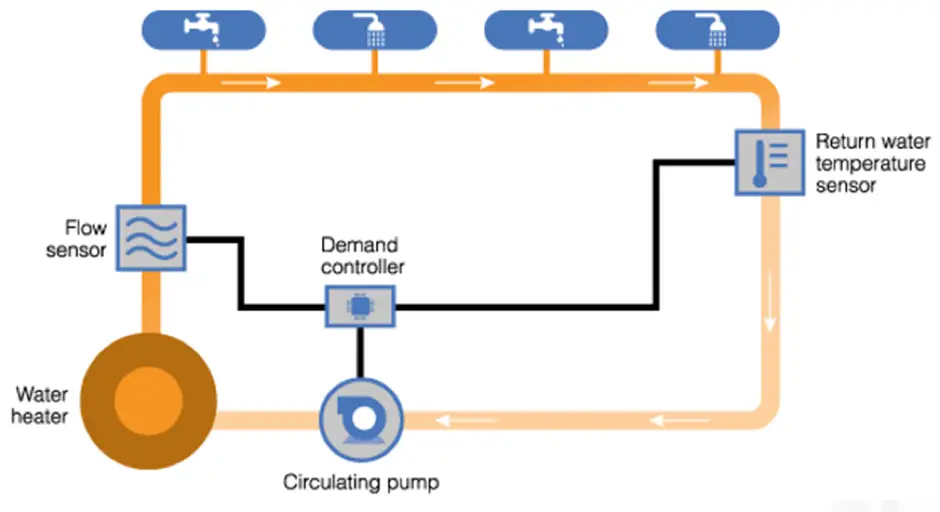
The Gravity system depends on the concept of thermosiphon. This involves the hot water rising to the top and the cold water reaching the bottom. In such a hot water circulating pump system, the water heater is required to be placed under the hot water taps on which you are planning to use it for.
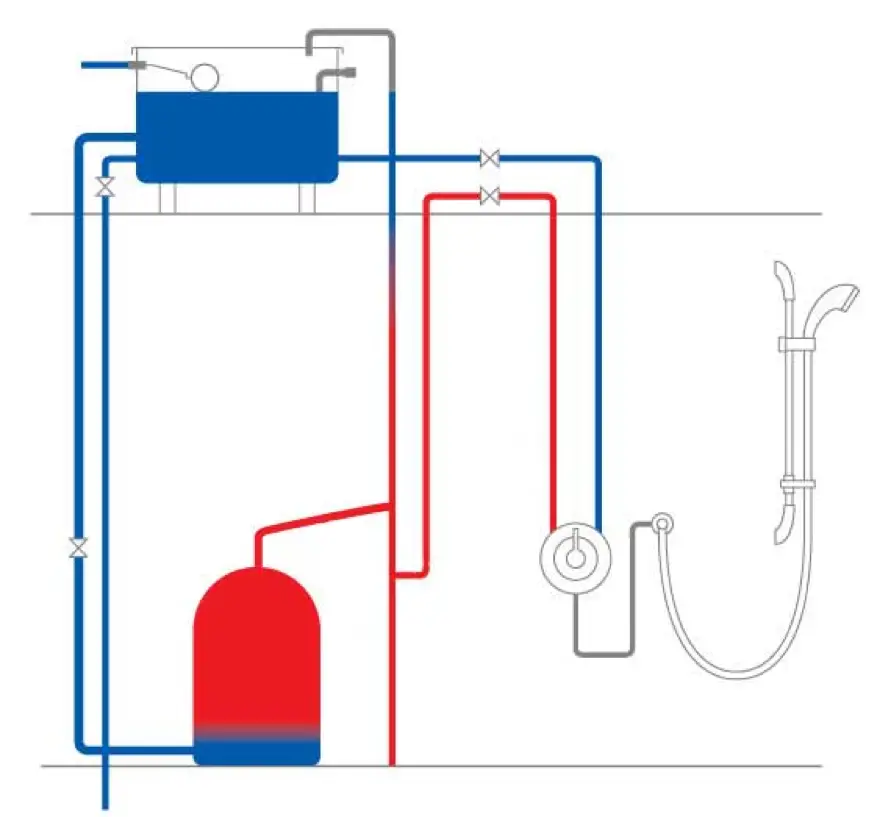
What Is the Sensor Valve?
Have you ever given a thought to how the water circulation system works? It makes use of a technique called a sensor valve. The sensor valve lets the hot water circulating valve know when to shut down and turn on the pump.
What is a sensor valve? A senor valve is a thermostatic valve and helps you read the temperature of the water and then either opens or shuts down the valve. Normally, the sensor valve is installed under the sink that is situated farthest from the hot water heater.
The sensor valve opens or closes depending on the temperature of the water. When the temperature in the hot water line drops to the pre-set value, it merely opens up, and thus hot water pump starts running. When the water temperature reaches 95 degrees F, the sensor valve closes down, and the hot water pump turns off.
The sensor valves can be equipped with timers so that the hot water pump can run only for a specific period of time.
How Does An “Under Sink” Hot Water Circulating Pump Work?
In many situations, hot water circulating pump is installed above the water heater. While that has been a standard procedure, there are instances where a hot water pump is installed under the sink. The installation procedure remains the same as in the case of above the water heater system, but you get a localized installation.
One of the huge advantages associated with under the sink installation lies in the ease of installation that it provides you access to. You will need to simply connect the flexible water connectors to get the task done. There isn’t any need for an elaborate installation procedure such as soldering and de-soldering.
Under the standard over the heater installations, you need to install the sensor valve between the pump and the tap. In the case of under the sink hot water pump installation, the sensor valve is installed within the pump, which further avoids the need for a separate installation process. However, it can bring hot water to only those fixtures installed between the water heater and the sink under which the pump is installed.
How Does A ‘Dedicated Return Line’ Work?
The dedicated return line – as the name itself should indicate – consists of the separate return lines from each of the fixtures. This creates a dedicated loop and does not have the cold water line as the return line. Instead, you will get access to a dedicated return water line.
In the case of a dedicated return line, a return line runs from the farthest of the fixtures and is connected back to the water heater. This is ideally the return line is used on a traditional hot water recirculating pump design.
The advantage of the dedicated return line is that it creates a perfect loop for the water circulation system.
Types of Hot Water Recirculation Pumps
Basically, you will find two types of hot water recirculation pumps – Full Reciprocating Pump system and Recirculating Pump Comfort System. Each of these two systems come with different setup, skills, labor, and costs.
How Much Water Could You Save With A Water Recirculation Pump?
It has always been debatable deciding whether a water recirculation pump saves water. There have been different schools of thought about it. However, it has been assumed that on average of 31 gallons of water per day can be wasted while you wait for the hot water to be available at the faucet. Looking at the average cost of water rising, that can be considered to be a huge wastage.
Studies have gone on to indicate that an average of 11461 gallons of water is wasted per year in the entire United States while waiting for the hot water. From those statistics, it may be worthwhile to consider it as being equivalent to saving a minimum of 11000 gallons of water per year. The actual savings per home may be dependent on the number of people per household and a wide range of other factors.
What Are the Energy Costs of Water Recirculation Pumps?
The actual costs of energy on the water circulation pumps can be dependent on the system and the wattage of your pump. In case you have a timer on the pump, the average cost – assuming an average of three to four hours of running – you will incur $20 to 30 per year on the energy costs for your water recirculation pump.
The average cost of electricity for a small pump should be around $ 0.12 to $ 0.15 per kW. That should take you the energy cost of around $ 26 to $ 34 by that calculation.
Traditional vs. Tankless Water Heaters – What are the differences?
A tankless water heater is also known as on-demand water heater. These make use of the high powered burners for heating the water rather rapidly. The tankless water heaters supply the hot water directly to your faucets without storing it. A traditional storage water heater, on the other hand, has an insulated tank. The tank capacity can range anywhere between 30 to 50 gallons.
If you are checking out the differences between a tankless and traditional water heater, there isn’t a clear winner. Both of them have their own advantages and disadvantages.
Tankless Water Heaters
- They offer you a great deal of energy savings.
- These offer more prolonger durability and lifetime
- They do consume lesser space.
- You can get access to hot water whenever needed.
- Tankless water heaters provide instant heating of water
- The initial cost may be on the higher side
- Installation costs can be a bit higher
- Simultaneous applications that need hot water can make the water heater fail in providing the optimum heat
Traditional Water Heaters
- A significantly lower installation cost
- Simpler operation
- Lesser maintenance requirements
- Repairs tend to be less expensive
- Your energy charges may increase
- They can occupy more storage space
- Durability is a huge question
The Bottom Line
A hot water recirculating system can be a great help if you do not want to wait for hot water. Irrespective of the size of your home, using an excellent hot water recirculating system can help you save your time, energy, and costs to a considerable extent.

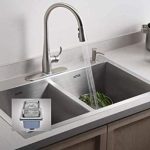
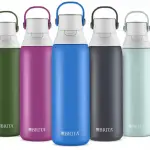
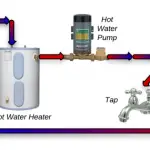
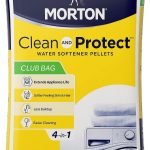
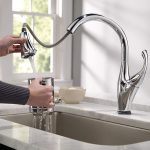



Add Comment